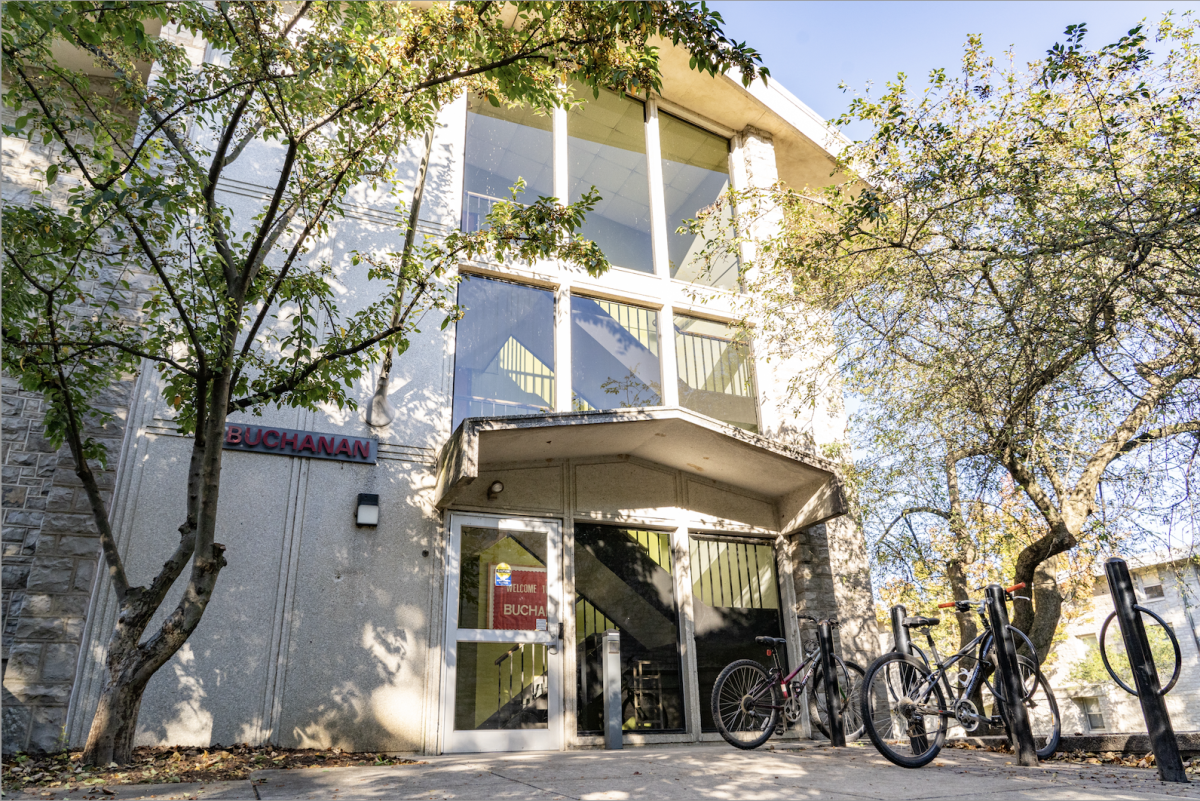University of North Texas psychology professor Yolanda Flores Niemann came to Dickinson to give a workshop on microaggressions on April 3 in Denny Hall. The workshop, hosted by the Popel Shaw Center’s A.C.E. Peer Mentoring Program, defined and provided examples of microaggressions as well as how to respond when faced with one.
Microaggressions are overt, conscious and intentional acts that convey negative ideas about a person or group; they can be verbal, nonverbal or even environmental. As Flores Niemann said, microaggressions are “in many ways an assault on our identity.”
The workshop began with the viewing of a video created by Flores Niemann, titled “Microaggression in the Classroom.” The video, now on PBS Learning Media, covers the terms “microassault,” “microinsult” and “microinvalidation.” Microassaults are overt discrimination done to intentionally harm another person either physically or verbally. Microinsults are comments or actions that are insensitive or disregard a person’s identity, usually based on conscious or unconscious group stereotypes. Microinvalidations, also referred to as gaslighting, are comments or actions that dismiss the experiences of historically discriminated groups. Highlighting student experiences, Flores Niemann directed the video towards students and the microaggressions they frequently face.
Microaggressions most frequently occur when the aggressor can remain anonymous (hence why social media so often is a place of bullying). They also frequently occur when the perpetrators are surrounded by people who share similar beliefs and will not be offended by the comment or action. Another common factor is the loss of emotional control, perhaps due to alcohol or other factors.
Flores Niemann’s use of contemporary issues in her presentation brought the reality of microaggressions to light. This is evident in the rise of hate crimes against Latinos, increasing antisemitism and attacks on LGBTQ+ and trans communities across the United States.
The “Color Blind” ideology was used to introduce one of the most commonly used microaggressions—when a person says, “I don’t see color.”
“This takes away from my experience. They’re saying it’s not worth mentioning, observing. It’s a very hurtful microaggression,” Flores Niemann said.
To combat this, she recommends using color insight, which recognizes that a racial status quo does exist in this country in which society attributes race to each member. Color insight is a form of awareness and helps individuals to recognize their own biases and become more sensitive to the experiences of others.
“Color blindness urges us to not notice color, race, sexual orientation, et cetera,” Flores Niemann said.
But choosing to see its undeniable presence is a step individuals can take to ensure they do not ignore the life experiences of those around them.
In addition to color blindness, Flores Niemann spoke about the connection between microaggressions and tokenism. Tokenism is the social practice of including a member of a marginalized community to portray the image of diversity and inclusion, usually done to avoid criticism. With tokenism at play, the negative consequences are many, including racial battle fatigue, stigmatization, attributional ambiguity and role encapsulation.
Flores Niemann guided listeners on how to respond to microaggressions, encouraging students to separate intent from impact and express their feelings.
“Let them know you understand that they didn’t mean to be offensive, but explain why their comment made you uncomfortable. It’s not an attack, but it helps disarm them. Try to make it a teaching moment,” she said.
She challenges students to share their own processes and challenge the underlying stereotypes. This helps others to feel less self-conscious and defensive, enabling them to expand their awareness when one offers alternative perspectives. Additionally, she asks students to express and promote empathy.
Concluding her presentation, Flores Niemann shared her favorite strategy. It is the simple question, “can you say more about that?” When you do not know what to say, or the microaggression happens to you or someone else in a classroom setting, the simple question can open up the floor for more conversation to occur.










